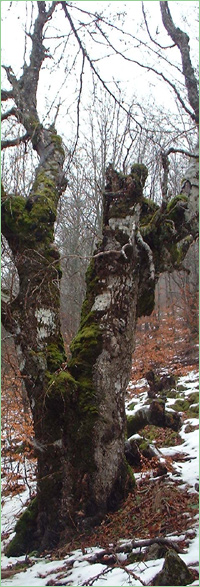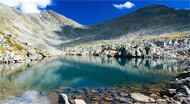Reka Tundzha 1 (Unique identification code in the register: BG0000192)
Category: PZ under the Habitat Directive
Area: 9503.0 hectares Location:
1.
District: Sliven, Municipality: Nova Zagora, Locality: Banya, Sadiysko pole
2.
District: Sliven, Municipality: Sliven, Locality: Binkos, Blatets, Chintulovo, Dragodanovo, Gavrailovo, Glufishevo, Gorno Аleksandrovo, Kamen, Kovachite, Krushare, Malko Chochoveni, Mechkarevo, Panaretovtsi, Samuilovo, Seliminovo, Sliven, Strupets, Trapoklovo, Zheliu vojvoda, Zlati voyvoda
3.
District: Sliven, Municipality: Tvarditsa, Locality: Bliznets, Chervenakovo, Sartsevo
4.
District: Stara Zagora, Municipality: Kazanlak, Locality: Buzovgrad, Cherganovo, Gorno Cherkovishte, Kanchevo, Kazanlak, Koprinka, Ovoshtnik, Razhena, Rozovo
5.
District: Stara Zagora, Municipality: Maglizh, Locality: Maglizh, Shanovo, Tulovo, Vetren, Yagoda, Yulievo, Zimnitsa
6.
District: Stara Zagora, Municipality: Nikolaevo, Locality: Elhovo, Nikolaevo, Nova mahala
7.
District: Stara Zagora, Municipality: Pavel banya, Locality: Gabarevo, Manolovo, Osetenovo, Pavel banya, Tarnicheni, Viden, Аleksandrovo
8.
District: Yambol, Municipality: Straldzha, Locality: Zimnitsa
9.
District: Yambol, Municipality: Tundzha, Locality: Drazhevo, Hadzhidimitrovo, Kabile, Veselinovo, Zavoy
10.
District: Yambol, Municipality: Yambol, Locality: Yambol
Falls in the territory of the following Regional Inspectorates of Environment and Water (RIEW):
Stara Zagora - bul."Stara planina" № 2
Ordinance for announcement:
Ordinance No.РД-317 from 31.03.2021
2-2-192-317-2021
Ordinance for change:
Change in the area - increase with Decision No.811 from 16.11.2010
Record for protected zone (link):

Aims of the declaration:
1. Preservation and maintenance of the types of natural habitats specified in item 2.1, the habitats of the species specified in item 2.2, their populations and distribution within the boundaries of the zone, to achieve and maintain their favorable nature conservation status in the Continental biogeographical region;
2. Increase the contribution of the protected zone to the area of natural habitats with code 6210 (* important orchid habitats);
3. Improving the structure and functions of natural habitats with codes 3150, 3260, 3270, 7230, 91E0*, 91F0, 91M0 and 92A0;
4. Improving the state of the habitats of species Triturus karelinii, Testudo hermanni,Testudo graeca, Myotis bechsteinii and Dactylorhiza kalopissii;
5. If necessary, improvement of the condition or restoration of types of natural habitats refered in item 2.1, habitats of the species refered in item 2.2 and their populations.
Objects of protection (species or habitats):
1. Article 6, paragraph 1, section 1 from Biological Diversity Act: 1530 * Pannonic salt steppes and salt marshes;
3150 Natural eutrophic lakes with Magnopotamion or Hydrocharition;
3260 Water courses of plain to montane levels with the Ranunculion fluitantis and Callitricho-Batrachion;
3270 Rivers with muddy banks with Chenopodion rubri and Bidention p.p.;
6210 Semi-natural dry grasslands and scrubland facies on calcareous substrates (Festuco-Brometalia) (*important orchid habitats);
62A0 Eastern sub-Mediterranean dry grasslands;
6430 Hydrophilous tall herb fringe communities of plains and of the montane to alpine levels;
6510 Lowland hay meadows;
7230 Alkaline fens
8230 Siliceous rock with pioneer vegetation of the Sedo-Scleranthion or Sedo albi-Veronicion dillenii;
91E0 * Alluvial forests withAlnus glutinosa and Fraxinus excelsior (Alno-Pandion, Alnion incanae, Salicion albae);
91F0 Riparian mixed forests of Quercus robur, Ulmus laevis and Fraxinus excelsior or Fraxinus angustifolia along the great rivers (Ulmenion minoris);
91M0 Pannonian-Balkanic turkey oak-sessile oak forests;
92A0 Salix alba and Populus alba galleries;
2. Article 6, paragraph 1, section 2 from Biological Diversity Act: Mammals - Vormela peregusna, Lutra lutra , Spermophilus citellus, Myotis myotis, Myotis bechsteinii, Myotis blythii, Myotis capaccinii, Myotis emarginatus, Rhinolophus ferrumequinum, Rhinolophus hipposideros, Rhinolophus mehelyi, Rhinolophus euryale, Barbastella barbastellus, Miniopterus schreibersii;
Amphibians and reptiles - Bombina bombina, Triturus karelinii, Elaphe sauromates, Emys orbicularis, Testudo hermanni, Testudo graeca;
Fish - Cobitis taenia, Rhodeus amarus, Barbus cyclolepis;
Intervertebrates - Austropotamobius torrentium, Lucanus cervus, Cerambyx cerdo, Morimus funereus, Ophiogomphus cecilia, Coenagrion ornatum, Unio crassus;
Plants - Dactylorhiza kalopissii.
Current prohibitions and regimes:
1. It is prohibited conducting races with motor vehicles outside the existing roads;
2. It is prohibited movement of motorcycles, ATVs, UTVs and buggies off existing roads in non-urban areas. The prohibition does not apply to routes for the movement of the listed motor vehicles determined on the basis of a normative act, as well as in case of disasters, emergencies and for carrying out fire-fighting, emergency, control and rescue activities;
3. It is prohibited the prospecting for minerals (construction and stone materials), creating new and expanding concession areas for extraction of minerals (construction and stone materials); prohibition does not apply in cases where the date of publication of the order in the "Official Gazette" has started a procedure for granting permits for prospecting and / or exploration and / or the concession for extraction under Subsurface Resources Act (SRA) and Concessions Act, or a procedure for their coordination under Chapter Six of the Law on environmental protection and / or art. 31 of the Biological Diversity Act or an application for registration of a commercial discovery;
4. It is prohibited to change the way of permanent use, plowing, afforestation and conversion into permanent plantations of meadows, pastures and grassland, when using agricultural lands as such;
5. It is prohibited to plow and afforest meadows, barren lands and other unforested forest territories within the boundaries of non-forest natural habitats under item 2.1 except in cases of proven need for protection against erosion and flood rain, as well as in cases of implementation of eligible plans, programs, projects or investment proposals approved in accordance with environmental legislation;
6. It is prohibited to remove landscape features (borders, vital single trees and groups of trees, traditional strips occupied by shrub and tree vegetation among lands under cultivation, protective forest belts, stone fences and hedges), when using agricultural land as such, except in cases to removal of invasive alien species of trees and shrubs;
7. It is prohibited the use of fertilizers, soil improvers, biologically active substances, nutrient substrates and plant protection products that do not meet the requirements of the Plant Protection Act;
8. It is prohibited the use of mineral fertilizers in meadows, pastures, grasslands, abandoned agricultural lands and forest areas, as well as plant protection products of professional category of use in these areas except for calamity, epiphytosis or the use of selective methods to combat invasive alien species;
9. It is prohibited to use of organic sludge from industrial and other waters and household waste for introduction into agricultural land without permission from the specialized bodies of the Ministry of Agriculture, Food and Forestry and when the concentration of heavy metals, metalloids and persistent organic pollutants in sludge exceeds background concentrations according to Annex № 1 of Ordinance № 3 of 2008 on the norms for permissible content of harmful substances in soils (SG, issue 71 of 2008);
10. It is prohibited to use of irrigation water that contains harmful substances and waste above the permissible norms;
11. It is prohibited burning of stubble, syllables, roadside strips and areas with dry and moisture-loving vegetation;
12. It is prohibited to drainage of coastal floodplains of rivers and other natural water bodies , changes in the hydromorphological regime through drainage, removal of sediments, correction, barricading of rivers, except in cases in urban areas and in cases of flood danger, which may lead to a risk to human life and health or the occurrence of material damage, in case of disasters and accidents and to improve the condition of the natural habitats and the habitats of the species under item 2.
13. It is prohibited extraction of wood and biomass in forests in the old age phase, except in cases of damage of more than 50% of the area of the respective forest in the old age phase due to natural disasters and calamities; in old age forests, through which existing forest roads and other infrastructure objects pass, if proven necessary, felling of single dry, damaged, endangered or obstructing the safe movement of people and vehicles or the normal functioning of infrastructure objects trees is allowed;
14. It is prohibited grazing of domestic animals in forest areas, which are designated for forests in the old age phase.
Overlapping (partial or full):
1.
Natural Monument: Nahodishte Na Mrazovets v m. Mestnost Ormana
2.
Natural Monument: Ostrova Na Tundzha
3.
Protected Site: Ivan Gyol
4.
Protected Site: Veselinovska Gora
5.
PZ under the Bird Directive: Adata - Tundzha

|
|

|





